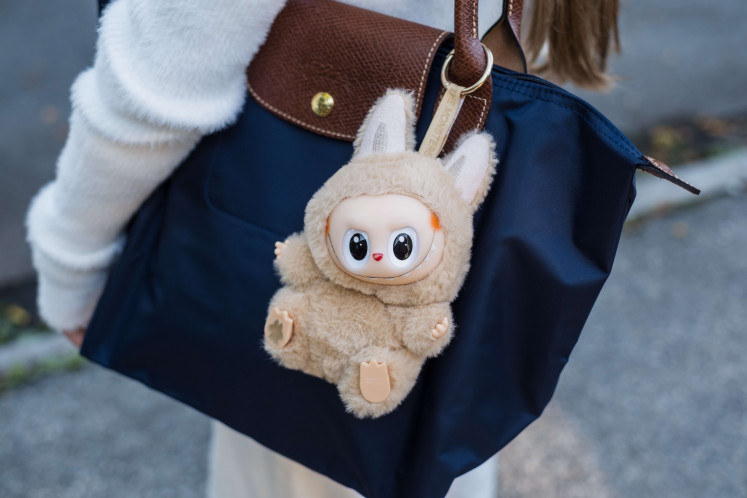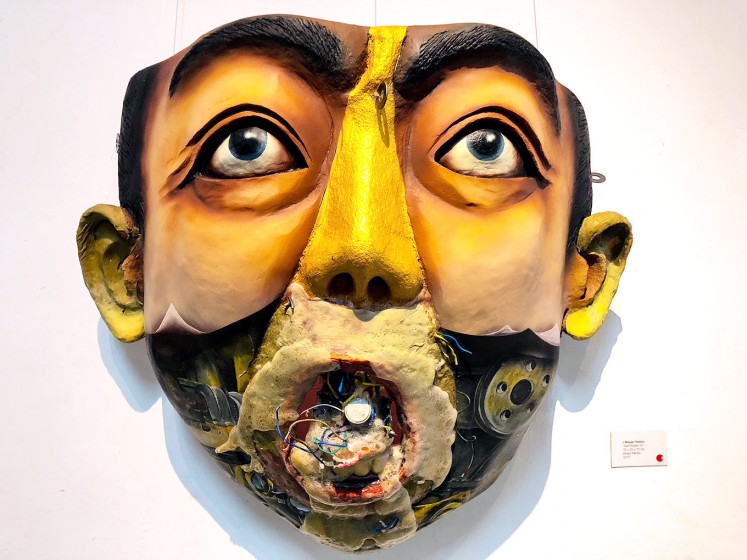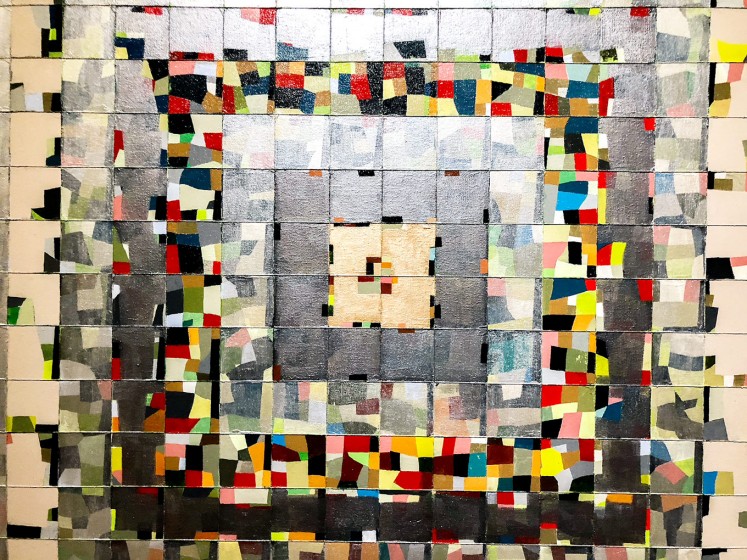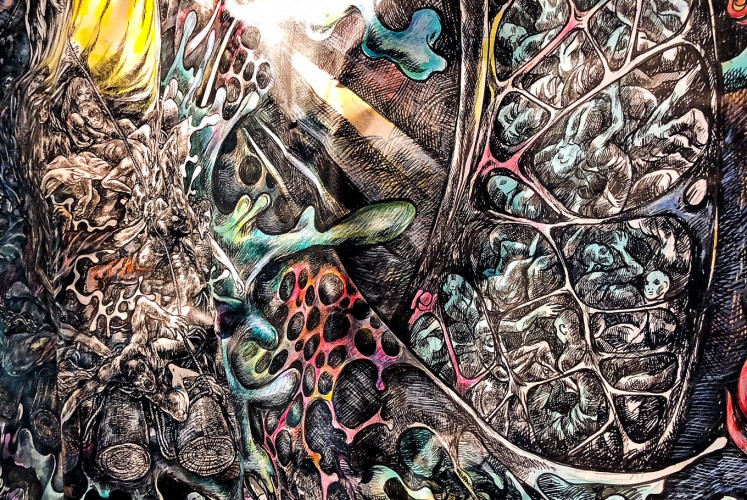Popular Reads
Top Results
Can't find what you're looking for?
View all search resultsPopular Reads
Top Results
Can't find what you're looking for?
View all search resultsBeing and becoming: Galang Kangin's 20-year quest to find and redefine identity
Change text size
Gift Premium Articles
to Anyone
A
rtists showcase a diverse menagerie of styles, colors and perspectives united by one shared idea of continuous exploration in an exhibition at the Neka Art Museum (NAM) in Ubud, Bali.
A formation of oval-shaped menhirs greets visitors as they enter NAM’s exhibition wing.
Crafted from soft sandstone easily found in the steep ravines along major rivers that run across Bali’s Gianyar regency, the menhirs tell a tale about the island’s tumultuous volcanic past and exploitative present.
The sandstone was created through a long process following two major volcanic events some 30,000 and 20,000 years ago that were responsible for the creation of the Batur caldera, three new volcanoes and the island’s overall topography.
Nowadays, sandstone deposits formed by those events are a major source of livelihood for hundreds of laborers toiling in quarries along the rivers, from Silakarang in the north to Sukawati in the south, as well as for numerous local artisans crafting sandstone statues for temples, hotels and tourists.
It was these quarries, particularly the environmental damages they cause, that inspired I Dewa Gede Soma Wijaya to create the menhir formation as part of 2017’s Yang Tersisa (The Left Overs) series of installations and sculptures. Some were created using left-over materials collected from quarries.
A soft-spoken man, who is often plagued by questions over his penchant for sculpting unconventional statues, Soma is anxious about the future of man’s relationship with Mother Nature.
“There are several quarries near my home, left abandoned after being stripped bare of their sandstone deposits,” he said. “We need to stop this greedy exploitation of nature.”
Yang Tersisa is part of Becoming, an ongoing exhibition celebrating the 20th anniversary of the Galang Kangin artist collective. Featuring the works of Galang Kangin’s 15 members, the event will be available for viewing until the end of March.
Becoming is a captivating and fresh display of both individuality and collectivism. It is the kind of exhibition where its beauty is truly greater than the sum of the works on display.
In one corner of the exhibition, I Made Galung Wiratmaja’s work speaks about the commodification of art, while on one of the adjacent walls, I Nyoman Adi Winata’s painting encourages viewers to remember and rethink the plight of displaced and marginalized people.
Their concerns might be diverse, but their works share a similar trait: an aesthetic maturity.
Twenty years of tireless exploration carried out individually and as a group has clearly played a major role in elevating their skills and visual vocabulary.
Without that aesthetic maturity, it would be very difficult for an artist to dodge the trap of creating a single narrative artwork; a visual slogan that, albeit beautiful, is lacking the ability to inspire and incite meaningful public discourse.
Fokus by Nyoman Diwarupa (JP/I Wayan Juniartha)Galung’s work The Art of Commodity, for instance, is a testament to such maturity. A collection of paintings tied together with cheap plastic ribbons is placed on the ground. A “20% off” sign is visible in one of the paintings.
If Galung’s aims were solely to increase the shock value of the artwork, he could easily have used an actual, cheap plastic ribbon to bind the paintings together, thus turning them into “cheap” and generic objects.
But Galung chose a more difficult path by painstakingly painting that cheap plastic ribbon as well as the discount sign. In fact, what appears to be a collection of several paintings, upon close observation, turns out to be a single painting.
The piece not only showcases his mastery over depth, dimension and the illusory elements of painting, but also underlines his true objective.
“We live in an era that evaluates art based on its monetary value — a discounted price means a lower quality artwork. How can we put a price tag on beauty? On awareness? These are the questions I want viewers to discuss.”
In Adi’s Hope (Raft of Refugees), a painting of hundreds of people drifting on a stormy ocean with two crucified on giant daggers, the painter maximized the piece’s haunting effect by cleverly manipulating a section of the canvas to resemble the ocean’s waves.
The Hope by Nyoman Ari Winata (JP/I Wayan Juniartha)In his curatorial note, Hardiman attributed the group’s aesthetic maturity to its perpetual quest for identity. In its early years, it identified and defined identity as a signature visual element and vocabulary exclusive to a specific painter.
“Years of exploration revealed to them that identity is not a static and permanent thing. Instead, it is an idea that undergoes constant revision,” he explained.
Through the constant and deliberate process of finding and redefining that identity, a perpetual shift between being and becoming, members of Galang Kangin deliberately keep themselves on the edge. They refuse the comfortable life of established artists to pursue new themes, new explorations and a new visual language.
“This exhibition is the result of their refusal to stay in their comfort zone, a daring act of abandoning their signature style to embrace their current identity and perspective,” Hardiman said.














